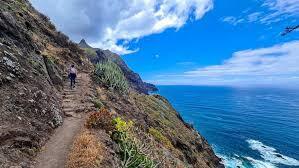- 31 Mar, 2025
- Travel tips
Cordoba or it is also known as the Cordova, is a city in Andalusia, Spain, and it is also the capital of the Province of Cordoba. It is one of the most exciting destinations in Andalucia, which is an ancient city on the Guadalquivir River and home to the stunning Mezquita-Catedral, a UNESCO World Heritage Site. The question arises: can you do it in one day? This question is understandable as most of the travelers in southern Spain will surely already have their hands full with other cities like Seville and Granada, which each demand at least several days on their own. That is why many try to tick Cordoba off the list as a quick day trip from Seville or as a stop-over from Madrid. But that is not to say that Cordoba does not have enough things to see or do, and you will see a lot that would not be enough to explore in one day.
How many days to spend in Cordoba?
Visitors on the one-day trip can go on a walking tour, get a decent feel for the historical center, have a relaxed lunch, and visit the stunning Mezquita, Cordoba's main attraction. But other than this, you will not have enough time to visit any of the museums, see the Alcazar of the Christian Monarchs, or fully soak in the atmosphere. So you may have to skip quite a few things, no matter how worth visiting they are. So, on the day trip, you can stay at Cordoba and have at least a whole day to explore. In case you are pressed for time, Granada and Seville should be your priority as they are the undeniable highlights of the region, through Cordoba is a great place to explore.
What makes Cordoba an interesting place?
There are a lot of the things that make Cordoba interesting have to do with its history. it was once the capital of the caliphate of Cordoba when much of Spain and Portugal was under Islamic rule. During this time, it was a leading center for science and also one of the most important places in the world. Even though it is fairly small by today's standards, during the 10th century, Cordoba was known to be one of the biggest cities in Europe. Yes, it's even bigger than London, Paris, or anywhere else; then you will see some of the history reflected in the architecture.
Some of the buildings look decidedly Moorish, while others show later Christian influences. You can also see this especially well at the stunning Mezquita, which uniquely mixes elements of a mosque and cathedral. Cordoba was also a major trade hub even before the Moors came in. The Romans originally established the town at what was the highest navigating point on the Guadalquivir River. Then you will see a few Roman remains most notably the stone Roman Bridge.
Except for its history, Cordoba is also simply a lovely medium-sized city in Spain with a friendly atmosphere and many relaxing tapas restaurants. The city has a wonderful heritage of decorating many inner courtyards with flowers and mosaics, which leads up to an annual festival and contest. Also, keep an eye out for these courtyards while you explore.
The stopover or Cordoba as a day trip
Thanks to being connected to Spain's fantastic rail network, the city is easily reached from the other major locations. Here is the information regarding the various information about Cordoba as a day trip. So read the information and understand the following:
From Seville: It is so easy and also the fastest to get to Cordoba by train. The high-speed trains take approximately 42 min direct. Other than this you also need to book tickets in advance, and it will be helpful for you.
From Madrid: Multiple travelers on a more extensive trip through Spain like to visit a stopover from Madrid to Seville. Cordoba is the last stop before the Seville on the high-speed rail line. You will need to get the tickets. One from Madrid to Cordoba and one from Cordoba to Seville. If you want to leave your luggage for the day, you will find the lockers at the bus station, which is just across the street from the train station.
From Malaga: The travel time can be nearly to 2 hours by car but just approximately an hour by train. There are direct high-speed AVE and Alvia benefits. You can book the tickets on RailEurope.com.
Things to do in Cordoba
A free walking tour is an efficient way to see a lot of Cordoba and orientate yourself quickly is to go on a free walking tour. These tours are not free but donation-based, so you can pay what you want at the end. So you can join the walking tours in Cordoba and do different tours with them and like it a lot; you can book ahead on their site. Your next stop should be the Mezquita. This is the structure, which is a part Morque and a part Cathedral, which is unique and a must-visit. Fortunately, since it is a large open space inside, the flow of visitors through this attraction is quite good. Even on a weekend day, getting a ticket and going inside almost immediately was easy. There are various places that you can visit in Cordoba, which are as below:
Alcazar de los Reyes Cristianos: This Alcazar de los Reyes Cristianos is a fortress from the Moorish times, which was later a palace and the seat of the Castilian Royal Court, and after still evolved as the headquarters of the Spanish Inquisition for three centuries. Despite the Gruesome past, today, this beautiful place contains beautiful gardens and fountains similar in style to the Alcazar in Seville or the Alhambra in Granada.
Puente Romano de Cordoba & Torre de la Calahorra
From the Alcazar, walk a couple of minutes along the river and cross over the famous Puente Romano de Cordoba. The bridge stands above the Guadalquivir River and contains 17 stone arches. Dating back to the 1st century AD, it once formed part of the Via Augusta, an important Roma road that ran from the Girona to Cadiz.
This ancient arched bridge has been renovated several times throughout its history, but its current form has become one of the most iconic symbols of Cordoba. The bridge is now completely traffic-free, and walking across it feels like stepping back in time to the days of Roman Cordoba. There is always a lively atmosphere, and it is a great place to snap some photos of the river and city.
The Mosque-Cathedral of Cordoba
Now, onto the main event, at least in our eyes; the mosque-cathedral of Cordoba is one of the most unique and fascinating religious buildings in all of Spain and the number one attraction in Cordoba. It is also nicknamed the "Mezquita." This mosque-cathedral of Cordoba features many diverse architectural styles that uniquely blend Islamic and Christian art and culture. The place is also one of the best preserved Islamic buildings in Europe, earning its status as a UNESCO World Heritage Site.
Lunch in the Jewish Quarter
If you do take the guided tour of the Mezquita we recommended above, then it will finish in the neighboring Jewish Quarter. The Jewish Quarter is a charming neighborhood in Cordoba's UNESCO-listed historical center. It was once home to the city's large Jewish community between the 10th and 15th centuries before the Hews were expelled from Sain during the Spanish Inquisition. Here, the Calleja de las Flores is the area's most famous street, thanks to its many colorful potted flowers on the white walls.
The Roman Ruins of Cordoba
After you have finished in the Jewish Quarter, start making your way north through the city center and up to the Palacio de Viana. On the way, you can make a short detour to see some of the city's most famous ancient Roman ruins. Temple Romano sits on a small hill above the historic center and houses the ruins of an ancient Roman temple, built during the reign of Emperor Claudius in the 1st century AD. In this place, just a minute's walk down the street from the Roman ruins, you will also cross the Plaza de la Corredera, one of the city's most famous and lively squares.
Explore the Patios of Cordoba
At the end of your day, discover some of the city's beautiful hidden patios. This city has become famous for its many stunning inner courtyards filled with colorful flowers, ponds, trees, and fountains. Since 1918, the Cordoba has even hosted an annual patio festival each spring, in which the locals compete to have the prettiest courtyard in the city. In case there is no festival, then there are still plenty of patios that you can visit throughout the rest of the year. So visit this place and enjoy it to the fullest.






